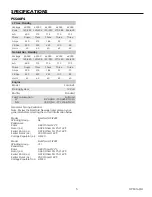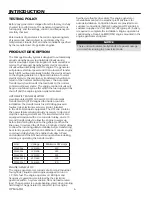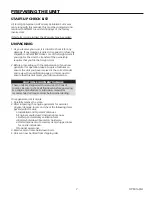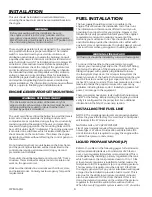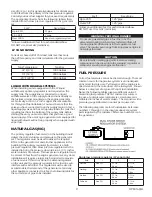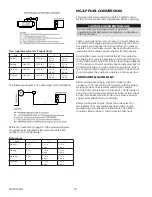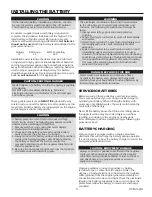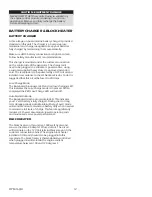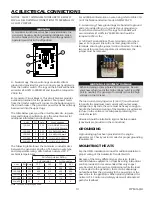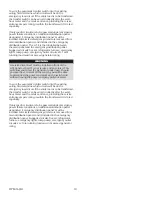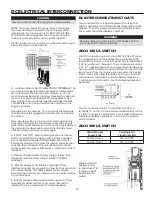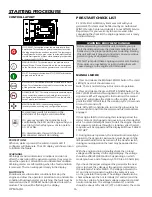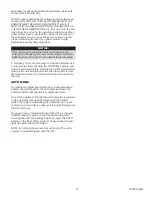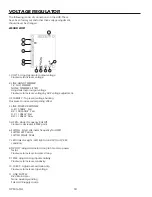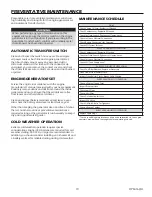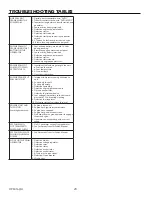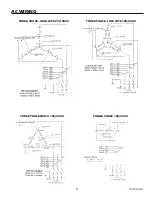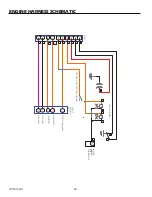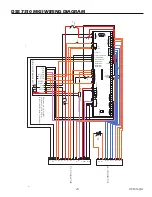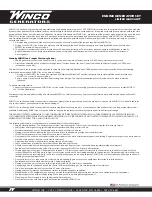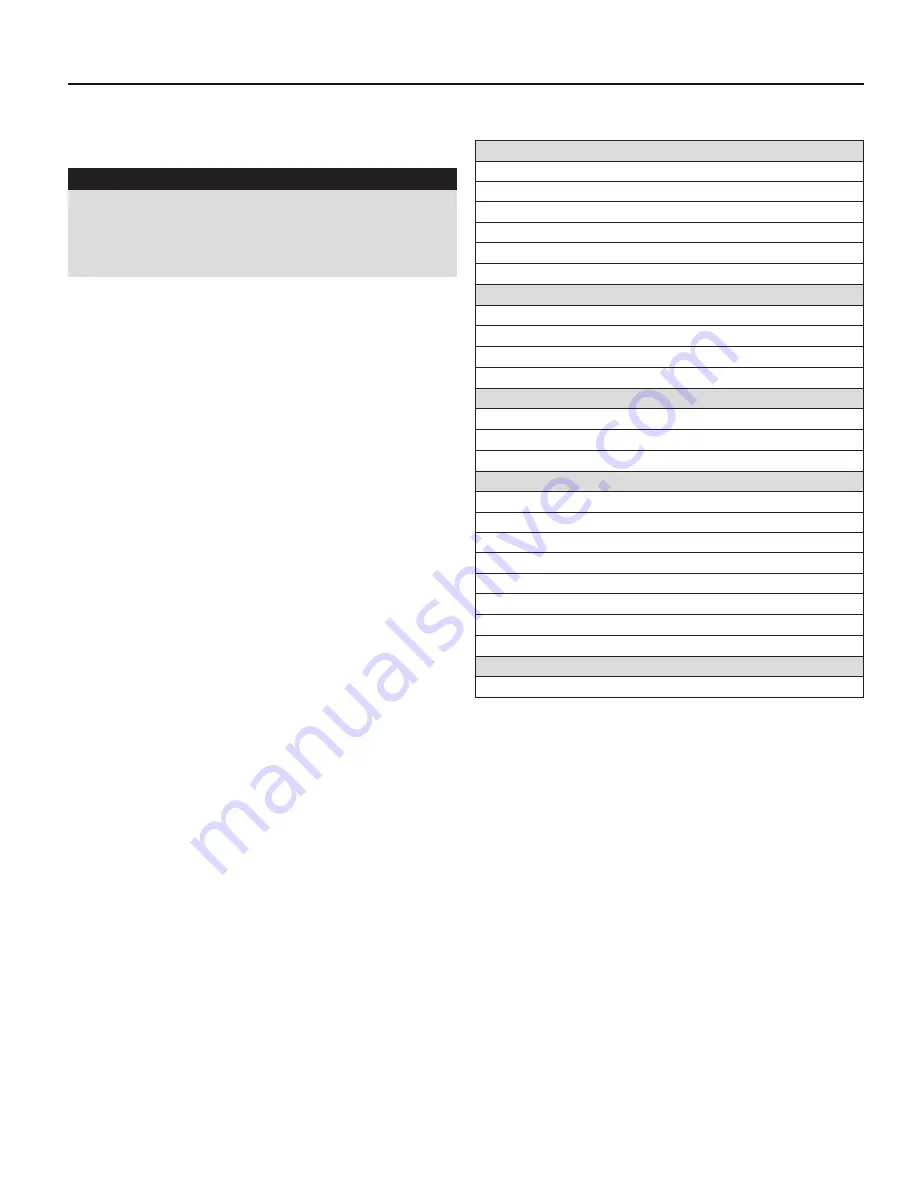
19
OPM-160/A
Reasonable care in preventative maintenance will ensure
high reliability and a long life for the engine-generator set
and Automatic Transfer Switch.
WARNING:
When performing any type of maintenance on this
equipment, make sure the selector switch on the engine-
generator is in the off position. If you are working in the
Automatic Transfer Switch, confirm with a reliable meter
that all power has been disconnected.
AUTOMATIC TRANSFER SWITCH
Clean and inspect the switch once a year. De-energize
all power sources, both line and engine-generator set,
then brush and vacuum away any excessive dust or
dirt accumulation. At this time, with the conductor de-
energized, you can remove the contact covers and check
the contacts. Make sure contacts are clean and not burned
or pitted.
ENGINE-GENERATOR SET
Service the engine in accordance with the engine
manufacturer’s manual provided with your new equipment.
Routinely remove debris and dirt from around the inside
generator enclosure. Ensure that the air intakes are free
from leaves and other debris at all times.
Clean and inspect battery terminals at least twice a year.
Also check the battery water level at least twice a year.
Other than keeping the generator clean and free of debris,
there is no other routine or preventative maintenance
required as long as the generator is run bi-weekly to keep it
dry and in good working order.
COLD WEATHER OPERATION
Extreme cold weather operation requires special
considerations. Higher CCA batteries are required for cold
weather starting; 650 CCA or larger are recommended. In
addition, you should consider installing an oil heater kit and
a battery warmer for reliable starting during cold weather.
PREVENTATIVE MAINTENANCE
MAINTENANCE SCHEDULE
DAILY
Check Engine Oil Level/Replenish if Needed
Check Coolant Level/Replenish if Needed
Check for Fluid Leaks & Tightness of Clamps/hoses
Check for Loose Electrical Connections
Check Battery Connections for Corrosion
Check LPG System for Leaks
EVERY 50 HOURS OF OPERATION
Check Coolant Level/Replenish if Needed
Check for Fluid Leaks & Tightness of Clamps/hoses
Check for Loose Electrical Connections
Check LPG Tank Supply Level
EVERY 200 HOURS OF OPERATION
Check Fuel Filter Element/Replace as Necessary
Clean Debris From Radiator Core
Inspect Drive Belt for Cracks, Breaks, Splits, Glazing
EVERY 400 HOURS OF OPERATION
Change Engine Oil and Filter
Inspect Breather Hose
Check Spark Plugs
Change Air Filter
Check Air-Induction for Leaks
Inspect PCV Valve
Check All Nuts & Bolts For Tightness
Change Engine Coolant
EVERY 3000 HOURS OF OPERATION
Replace Spark Plugs
* There are additional maintenance items and explanations in the engine
operator’s manual. Read thoroughly before operating this unit.

